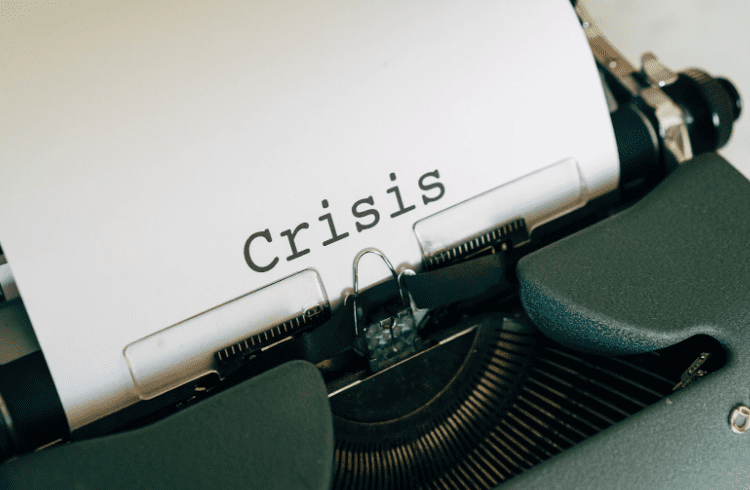Having a Crisis Management PR Plan is no longer an optional part of a business playbook. It is a must!
From a viral negative review to a misinterpreted ad, one mistake can spiral into a trending hashtag within hours. In the Philippines, where digital culture thrives on real-time reactions and social conversations often set the tone for mainstream news, controlling your brand’s narrative is critical.
But here’s the truth: you cannot “control” the narrative by hiding or staying silent. You do it by preparing a clear story, responding with empathy, and ensuring consistency across all channels.
What makes Crisis PR in the Philippines Unique
With more than 86 million Filipinos active on social media, a single negative post can spread rapidly and reach millions before brands even become aware. Additionally, Filipinos highly value authenticity, sincere apologies, and accountability. Generic or scripted responses often fall flat (and people will be very vocal about it in the comments section!). Lastly, online trends quickly catch the attention of traditional media outlets like TV, radio, and print, making it essential for PR efforts to be seamlessly coordinated across both digital and traditional platforms.
The Importance of Storytelling in Crisis PR
An effective crisis PR goes beyond simply presenting facts; it involves shaping the narrative to demonstrate accountability, openness, and a clear path ahead. A skilled PR team can help you develop:
- The acknowledgment story: Owning up to what happened without shifting blame.
- The empathy story: Showing concern for those affected (customers, employees, communities).
- The action story: Outlining immediate steps taken and long-term safeguards.
When managed thoughtfully, your crisis response can not only mitigate damage but also enhance your organization’s reputation.
NGP Presents: A Sample Crisis Communication Template
Here’s the breakdown:
- A clear headline or statement — When preparing a crisis communication statement, start with a clear headline or statement of fact that acknowledges the incident. This lets your audience know you are aware of the situation and you’re open to accepting responsibility.
- An expression of empathy — Acknowledge those affected, and offer a sincere apology. Show that you understand their concerns and take the matter seriously. Then provide a brief and factual clarification of what happened without speculation (or a tone of defensiveness) to maintain transparency and credibility.
- An action step that you’ll follow through on — Outline the immediate actions your organization has taken, and will take, to address the issue. This reassures your audience that the situation is being actively managed. It’s also important to communicate your long-term commitment to preventing similar incidents in the future by explaining the measures being implemented. Encourage open communication by including a call to connect, providing contact information so people can reach out with further questions or concerns.
- An expression of gratitude — Close your statement with a note of gratitude and reassurance, emphasizing your dedication to serving your audience better moving forward.
Why You Shouldn’t DIY Crisis PR
Handling a crisis on your own might seem doable for many small businesses, but it often backfires. Without a clear plan, messages can become mixed, defensive, or worse.
That’s where a professional PR agency comes in. They prepare key statements and templates ahead of time, so you’re never caught off guard. They also train your team to respond effectively both to the media and on social platforms. With their help, your communication stays consistent whether it’s on Facebook, TikTok, official press releases, or internal messages. Plus, they keep a close eye on public and social sentiment, allowing you to adapt your approach quickly as the situation evolves.
Key Crisis Storytelling Strategies for 2025
1. Shape the Initial Narrative Quickly
The first statement you make during a crisis often sets the tone for how the story will be told. Acting promptly and transparently is crucial because, especially in 2025, silence can easily be interpreted as an admission of guilt, or worse, ignoring the issue altogether because you don’t care enough.
2. Localize Your Message
The same statement that works globally may not resonate in the Philippines. Infuse local language, cultural context, and values to make your response feel authentic.
3. Let the Leaders Speak for the Brand
In moments of crisis, Filipinos want to hear from people, not just logos or faceless companies. Having your CEO, founder, or a trusted brand ambassador deliver messages, ideally through heartfelt video statements, can build trust more effectively than written text alone.
4. Maintain Consistency Across All Channels
Ensure your message is unified across every platform, whether it’s press releases, Facebook, TikTok, email newsletters, or in-store announcements. Consistency helps prevent confusion and strengthens your credibility.
5. Shift the Story Toward Accountability and Growth
Don’t let the crisis define your brand. Instead, focus on how you are taking responsibility, improving processes, and preventing future problems. Filipinos appreciate stories of resilience and recovery just as much as they hear about mistakes.
How a PR Agency Can Support You During a Crisis
Effective crisis management no matter the platform, calls for quick responses, emotional awareness, and carefully crafted messaging. A PR agency can help you:
- Create crisis communication playbooks tailored specifically to your industry.
- Prepare executives for media interviews to prevent potential missteps.
- Utilize social listening tools to identify and address emerging issues before they escalate.
- Manage relationships with the media to ensure your side of the story is accurately represented.
The difference between damaging your reputation and rebuilding it often hinges on whether your crisis narrative is deliberately crafted or left uncontrolled. By focusing on acknowledgment, empathy, and concrete action, and by connecting with Filipino values, brands can not only survive crises but sometimes emerge stronger.
When faced with the unexpected, don’t just extinguish the flames. Share the story that restores trust.
Work with NGP IMC today, and let’s Tell, Share, and Connect that story!

Amy Ruth Valenzuela is a graduate of Far Eastern University, where she earned a Bachelor of Arts in Communication. With a strong passion for communications and media relations, Ruth has developed a diverse skill set that includes journalism, scriptwriting, events and production management, risk management, social media marketing, and layout and graphic design. Her experience in these areas has shaped her approach to storytelling and content creation, driving a commitment to excellence in every project. Ruth is dedicated to leveraging her expertise to create impactful narratives and foster meaningful connections in the industry.


